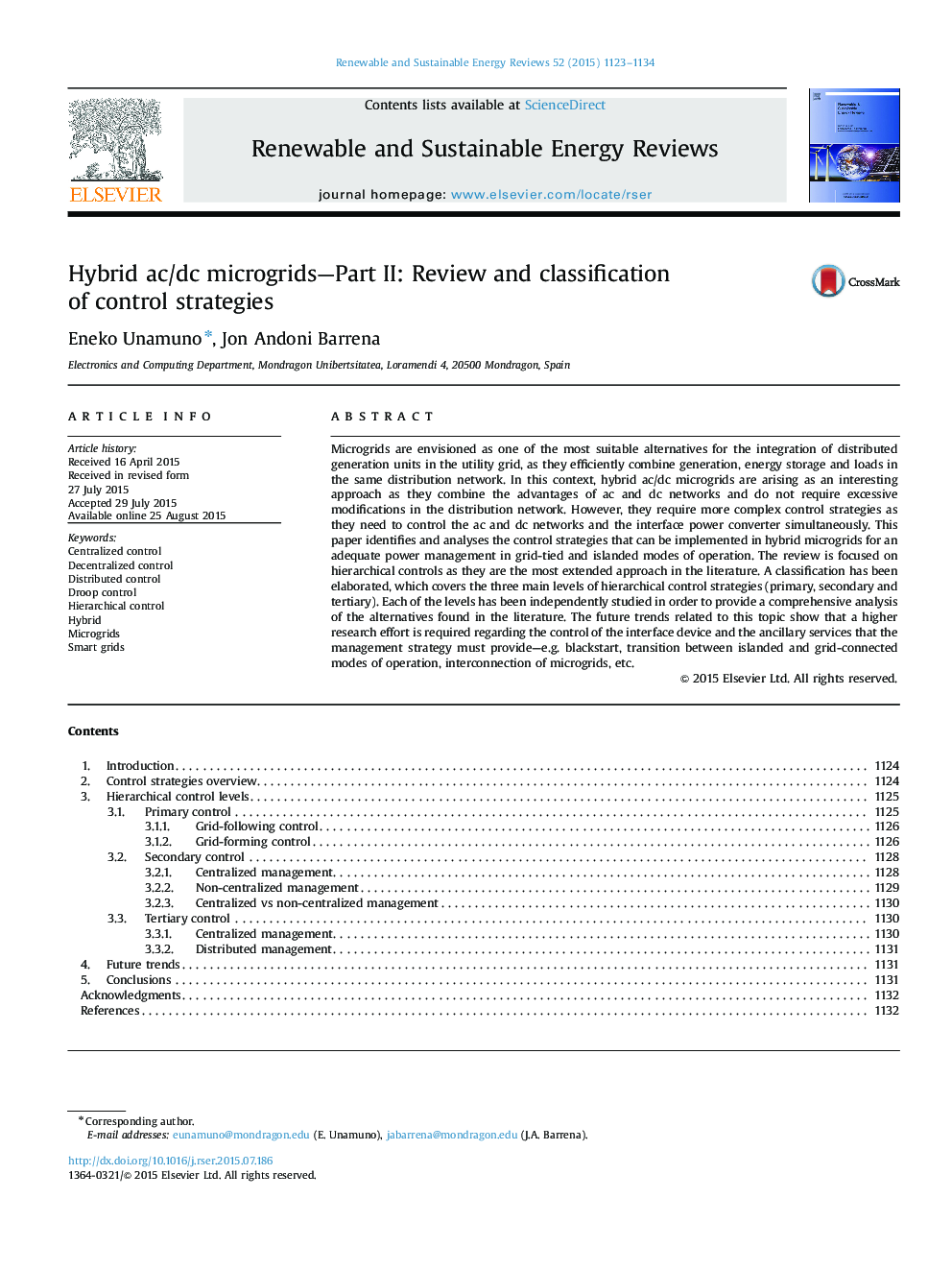| Article ID | Journal | Published Year | Pages | File Type |
|---|---|---|---|---|
| 1750014 | Renewable and Sustainable Energy Reviews | 2015 | 12 Pages |
Microgrids are envisioned as one of the most suitable alternatives for the integration of distributed generation units in the utility grid, as they efficiently combine generation, energy storage and loads in the same distribution network. In this context, hybrid ac/dc microgrids are arising as an interesting approach as they combine the advantages of ac and dc networks and do not require excessive modifications in the distribution network. However, they require more complex control strategies as they need to control the ac and dc networks and the interface power converter simultaneously. This paper identifies and analyses the control strategies that can be implemented in hybrid microgrids for an adequate power management in grid-tied and islanded modes of operation. The review is focused on hierarchical controls as they are the most extended approach in the literature. A classification has been elaborated, which covers the three main levels of hierarchical control strategies (primary, secondary and tertiary). Each of the levels has been independently studied in order to provide a comprehensive analysis of the alternatives found in the literature. The future trends related to this topic show that a higher research effort is required regarding the control of the interface device and the ancillary services that the management strategy must provide—e.g. blackstart, transition between islanded and grid-connected modes of operation, interconnection of microgrids, etc.
